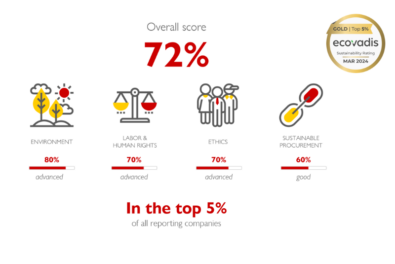Philippe Chone, Innovation and Change Lead at Philippe Chone Consulting, seen as CIO‘s right hand man. Philippe has independently delivered global business transformation programmes for the likes of Deutsche Bank, Willis Towers Watson, and most recently worked as Global Programme Director at HSBC leading an innovation portfolio. Find out why Philippe believes now is the right time to start your digital transformation programmes.
Subscribe for free here: iTunes . Spotify . Stitcher . YouTube
Video transcript
Kevin: Hi everyone. Welcome to another episode of The Crown Records Management’s digital transformation series. Today’s guest is Philippe Chone, the CIO‘s right hand man, who has independently delivered global business transformation programmes for the likes of Deutsche Bank, Willis Towers Watson, and who most recently worked as Global Programme Director at HSBC leading an innovation portfolio. Phillipe, welcome to the show.
Philippe: Thank you Kevin, it’s a pleasure to be here.
Key lessons from digital transformation programmes
Kevin: Excellent, thanks so much for coming on. So just to start off with, Philippe, you’ve got considerable experience of delivering large and complex digital transformation programmes, especially within financial services. You’ve worked with VISA and some of those before-mentioned brands. What key lessons have you learnt as an adviser?
Philippe: Obviously, there are a large number of lessons as you go along but there are a number of common themes in each of those big transformations. Change is here and it’s here to stay. There is never a right moment to start, now is the perfect time – rather than thinking you should have done it before.
The second message is that change is a journey rather than a destination. So it’s a process. It’s not a case of “I’m going to be doing this for five minutes then I’m done.”
Because it’s a journey you need to start, you need to start now, you need to start more often. And as with any journey you need to look at direction. What is the big vision? What are you trying to achieve? And then you need to take the team with you. Digital transformation or big transformations are more about leadership than technology.
I know everybody these days tends to think, “Technology, I’m going to be doing AI, I’m going to be doing machine learning, I’m moving to the cloud.” That might be part of the solution but that is not the first reason why you start. These are components, these are tools but unless you’ve got the ‘Big Why’ and you’ve got a team behind you, these kind of things won’t help.
If you just go for a cloud strategy, you may end up with the cloud but your business is still going to be doing the same as before and your competitors are still going to be ‘out-innovating’ you.
What are the reasons for change in the financial services sector
Kevin: Yes, it’s really interesting to start with, “Why,” as one bureau talks about it, rather than getting tactical with, “Where’s our AI strategy or our machine learning strategy?” In some cases, you don’t necessarily need one because that’s not the solution to the business problem.
Philippe, let’s talk specifically about the financial services sector, a very well-regulated sector. Crown do a lot of work with global financial services and banking organisations. Based on your significant experience, how well-positioned is that sector for this type of digital, business transformation?
Philippe: There are two parts to it. The transformation is mandatory. The environment is changing, the regulatory environment is changing constantly. Customers are being trained by Amazon and Amazon Prime to expect products straightaway with rich customer service deep down – low touch, mobile first. That’s part of the issue. Now, if you look at yourself as a large incumbent then how ready are you for this? Because you are being out-innovated in a number of directions by Fintech, neo-banks and others.
You have to change and you’ve got the platform. The customer needs new services and wants to change. The environmental pressure means you have to change.
Your business costs are probably going to be increasing, your business is changing because of regulation, and you are facing a lot of existing competition plus new competition.
Surprise, surprise, you have to change. You have to do something. That’s the reason for the change in platform.
It will, no doubt, be a large organisation making the change – maybe with an original partnership but with a lot of silos. This is what you need to do in these kind of digital transformations or in big transformational change. In innovation, the value comes when you break your silos, when each department collaborates together. And actually the competition should be outside the organisation rather than inside.
Simple cultural change but hard to do. Legacy, experience and culture have been in these large organisations for a long time. How do you bring this change about in a rapid but also safe fashion?
Once again, I believe the analogy of the journey is key. Yes, strategy is really important but I wouldn’t over-strategise on this. It needs to be done, it needs to be started.
I like to use a quote from Patton – “A good plan executed aggressively today is better than a perfect plan implemented next week.”
The message is really, “Start doing something.”
Innovating in a culture of regulation
Kevin: Thanks Philippe for that fascinating insight. So, you’ve described yourself as the CIOs and COO’s right hand man. I’m really interested to know what keeps ‘those profiles’ up at night?
Philippe: There are a number of things. The first one is, “Are we going to be in the news tomorrow for the wrong reasons?” So security and these days the issues around security are a given. What is needed is making sure that you’ve got the right controls in place, the right processes in place, the right people in place to solve this. This is prevention, obviously.
The second aspect:- the bigger, less urgent but probably much more important challenge is how you make sure you innovate, so that you don’t get suddenly taken by surprise by an Amazon or a ‘one of the big players’ coming into your territory, taking away your customers. As we talked earlier, you’ve also got the neo-banks and Fintech jumping at your heels, taking away some of the margin, the customers and your business.
How do you innovate in this kind of environment whilst you, if I can use the phrase, ‘keep out of jail’ from the regulators. You need to meet the regulatory aspect and you need to innovate. Innovation is an interesting thing because this is not a science. It’s not as if you’re investing 10 mills and you’re getting 10 mills back. Some of it is a bet on the future.
In terms of execution, where do you want to innovate? What do you want to innovate? How do you allocate your budget for innovation? What are the big ideas? How do you navigate that portfolio of innovation?
Then, “How you do you execute it?” That’s another challenge. The strategy, the execution, the focus is actually quite key. It’s easy to talk about but hard when you’re in the heat of battle, “How do you just decide, OK, we’re going to do it this way?”
Working out what ‘good’ and ‘bad’ look like
Kevin: It’s really interesting you mention the heat of the battle, which brings me on to my next question… I’ve read that you’ve turned around many an underperforming programme in your time so I’m interested, and I’m sure listeners will be interested as well, to hear, “What are the typical characteristics of a transformation programme that just isn’t working?”
Philippe: We’ve all seen this in our careers where you go into these programmes and they’re ‘green, green, green, green, green, or red’. It’s finding out, first of all, what is the real state of that programme, transformation or whatever. The real state comes from an understanding of what you’re trying to do. What does good look like? What does bad look like? So going back to the mission. Once you understand the mission then it’s a lot easier to say “OK fine, is that going to deliver it, how far?”
Without the mission, you also realise these programmes failed less because of the technology and a lot more because of the people. It’s all around people, understanding what we’re trying to do always. There’s always change. There’s always uncertainty, “What does it mean for me? Where am I supposed to go?”
The future state is not always necessarily clear. So how do you make sure everyone is pulling in one direction?
One of the key things from my point of view is one team, one mission and alignment around this.
On top of that, it’s about making sure that there is transparency. If something is not working then that information needs to flow up, down, sideways. This is where the power of the team comes together.
Normally, in a failing programme you tend to find the bad news is actually buried way below and it’s only when you do the post mortem that you realise that people knew about it but they didn’t talk about it.
So it’s about creating an environment saying,
“We all succeed as one team, we all succeed and we all fail together. If something doesn’t work, that’s fine, I’m not going to ‘chew your head off’. Let’s have a conversation about what isn’t working, what you think we should be doing. Let’s make a decision, let’s prioritise and execute and then come back again and check progress.”
It’s actually pretty simple, but it’s also pretty hard. In practice, it’s pretty hard to force everybody to go deep down, into some potentially very uncomfortable conversations but which are therefore right for the good of the programme and for the good of the organisation.
Accepting that change isn’t always about winning
Kevin: Back to some of what you were saying earlier, start with “why”, start with a proper vision to answer, a real business problem. It resonates with Steve Jobs’ quote that, “Technology really is just a vehicle for delivering change. Technology is only as good as the people you have.”
So just finally for the relatively ‘traditional business’ who are either at the early stages of their digital journey or in the midst of that transformation and are wondering do we need an AI strategy or a ‘machine learning strategy’ or so on (they might not need that at all, of course). What would be your playbook for modernisation and embracing transformation?
Philippe: The first thing is you need to innovate, you need to change. Creating that capability within the organisation to adapt is key. That journey should be started right now, if it’s not already started. The competition is here, the competition is here to stay. I don’t think change is going to be slowing down. When we reflect, we’re going to realise that not only are we seeing a lot more change right now but that compared with the future we’re going to be seeing a lot more.
It’s getting used to that ever-changing environment. I’m wary of words being used so much that they don’t mean anything anymore but it’s about the agility of an organisation, the ability to react to change, the fitness of an organisation, making sure that there’s the capability to change direction and innovate.
When you do this, there are two outcomes. If you make a change and it works, happy days, you win. If you make a change and it doesn’t work, then you learn.
Moving away from that world where we think you either win or lose. I tend to think that as an organisation you either win or you learn.
Keep in mind that this is a learning experiment. You obviously don’t want to ‘bet the farm’ and lose.
This is where you need to make sure that there are small, regular experiments being implemented in different regions and different areas. This is where, as an organisation, I would never say, “Go, big bang.”
Innovate in one area and then you spread…. It’s an in-built strategy of saying I’ve done this here, and in another area I’m trying something different and as an organisation this is where the whole organisation, the whole team, all the people and culture evolve over a period of time. That’s the first one. Culture, people.
The second one: we mentioned AI and machine learning. These tools might help and actually they all help but there is a big proviso. Make sure there’s no ego. AI, machine learning without data, or without data you can trust, doesn’t really help. It’s actually a hindrance. You need to get your data strategy in place. You’ve got to have your data structure and your lineage where they’re all understood, in an environment where they can be used.
These days everyone is talking about machine learning and there are a lot of experiments being done but machine learning is a lot more than having a scientist in a cupboard writing a great algorithm. Unless it’s being deployed there is very little value in this. Also if you’re going to be deploying it and treating it as a black box then you need to ask, “Do I trust the data coming in?”, “Do I trust the outcome coming out?”
How do we then validate the whole quality of the output? It’s the same as before, garbage in, garbage out.
Machine learning with the wrong data gives you some pretty poor answers. You need to have an understanding of the source and make sure the traceability of the source and the bios of the source are there. You need to make sure you understand where your data is coming from.
Kevin: Excellent. Garbage in, garbage out. Nothing’s changed from that perspective. Philippe Chone, fascinating to speak to you today. Thanks so much for your time.
Philippe: Thanks Kevin, thanks for having me.








